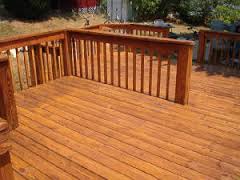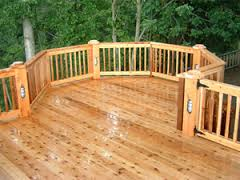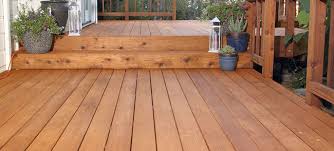Deck Staining
Deck Staining Services, power washing and professional deck staining to beautify your home decks and additions
 Deck Stain vs. Deck Paint…
Deck Stain vs. Deck Paint…
What is the Difference?
With deck staining we consider that selecting the right stain products for residential deck jobs requires “background” work before the job is started.
For example, what kind of finish are you really looking for?
Correctly applied, stain finishes will provide a true, flat finish that enhances the beauty of the wood surface. Semi-transparent stains offer a variety of tints that allow the grain and texture of wood to show through. In contrast, solid-color stains are heavily pigmented. These stains cover the wood grain, but do not cover its texture. Solid-color stains also provide more protection from the sun’s UV rays.
 Unlike stains, most house paints are formulated to provide a finish that differs from stain finishes in several ways.
Unlike stains, most house paints are formulated to provide a finish that differs from stain finishes in several ways.
Many house paints labeled as “flat” still give off a low-luster sheen when dry. In addition, paints are manufactured to form a harder, more protective barrier than stains between the wood and the environment. However, paints are more subject to peeling, since moisture can be trapped beneath the surface of the coating.
We can provide samples and pictures stains along with product information from manufacturers that will help demonstrate to you, the customer, some of the major differences in appearance and performance between these products.
What makes a good deck stain?

What to look for…
Ease of application
Good flow out of material (spread)
Durability
Flexibility
Corrosion, heat, water resistance
Forming a continuous protective film
High Viscosity (thickness or resistance to flow)
Easily cleaned
Color stability
Long-lasting protection
Factors affecting deck stain protection time?
Ultra Violet radiation (largest factor)
Dirt and debris decomposition (leaves, stick, etc…)
Foot traffic (wear and “sanding effect” on debris and dirt)
Weather
Quality of stain product… pigment quantity and quality, etc…)
Technique and coating thickness
Surface preparation (largest external factor)